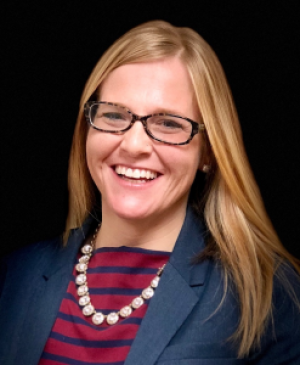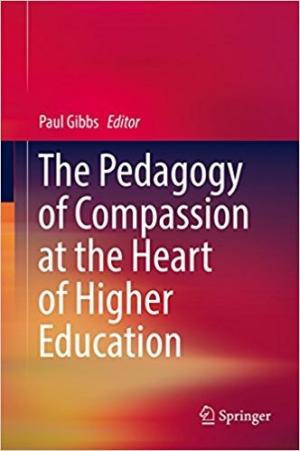Resources
Kennesaw’s Center for Excellence in Teaching and Learning provides an extensive list of disciplinary and interdisciplinary journals in the scholarship of teaching and Learning (SoTL) focused on undergraduate and graduate education for teachers at colleges and universities, organized alphabetically. Last updated in July 2017.

This indispensable handbook provides helpful strategies for dealing with both the everyday challenges of university teaching and those that arise in efforts to maximize learning for every student. The suggested strategies are supported by research and adaptable to specific classroom situations. Rather than suggest a "set of recipes" to be followed mechanically, the book gives instructors the tools they need to deal with the ever-changing dynamics of teaching and learning. Available with InfoTrac Student Collections http://gocengage.com/infotrac.
Inspired by the #FergusonSyllabus, the #StandingRockSyllabus, the #BlackIslamSyllabus and others, this reading list provides resources for teaching and learning about anti-Muslim racism in the United States. 
An online application that helps you develop instructional objectives for courses and instructional programs.

The call for educational practitioners to be critically self-reflective is fairly common today. This is in large part due to the work of pedagogical theorists, such as Stephen Brookfield, who have challenged educators to routinely assess and hone our teaching practices. Indeed, since the beginning of my teaching career, I have been encouraged by mentors to reflect critically on my teaching through the four lenses Brookfield identifies: (1) students' eyes, (2) colleagues' perceptions, (3) personal experience, and (4) theory.[1] Recently, however, I have noticed a pattern in my critical reflection: it becomes all-encompassing and far-reaching during the aftermath of national traumas. For example, in these few weeks following the shooting at Stoneman Douglas High School in Parkland, Florida, I have been thinking, “What are we doing wrong? What am I doing wrong? What else should I be doing?” The sickening coincidence that the shooting occurred on Ash Wednesday, the first day of Lent according to the Christian liturgical calendar that I observe, added an unavoidable urgency to my usual Lenten critical reflection. Because the main area of my social engagement is through my teaching and writing, the tragedy of yet another mass shooting prompted me to reconsider everything I have ever done in the classroom. Similar moments of wholescale critical reflection were stirred within me after other tragic events over the past few years. For example, I vividly remember this process of questioning all of my pedagogical assumptions and practices after the presidential election of 2016 and the deaths of Trayvon Martin, Tamir Rice, Eric Garner, and Michael Brown. In the genre of educational theory, I believe Jack Mezirow would define each of these events as a “disorienting dilemma.”[2] He has poignantly described how traumatic events can often lead us to scrutinize previously unquestioned assumptions and to identify how our assumptions have limited our thought-processes and actions up to the point they occurred. For me, each of these national tragedies has led me to uncover my previous assumption that “I need to be an expert in what I teach.” Based on this assumption, I had believed that my expertise in the area of “systematic theology” did not qualify me to teach about civic action or politics at all. So, if I wanted to teach about anything that engaged in social or racial justice (which I desperately did), I would need to go back and get another Ph.D. in critical race theory. However, through my critical reflection, particularly through Brookfield’s fourth lens of theory, I have come to understand the inaccuracy of my previous viewpoint and have begun to embrace a much more accurate alternative: all teaching in higher education must entail “ideology critique.” Indeed, I have taken a tip from Brookfield’s own theory. As he defines it, “Ideology critique is part learning process, part civic action.” It “focuses on helping people come to an awareness of how capitalism, White Supremacy, patriarchy, ableism, heterosexism and other ideologies shape beliefs and practices that justify and maintain economic and political inequity.”[3] I now understand ideology critique as a necessary and central component to critical reflection. National traumas led me to intuit this assumption, and Brookfield’s theory led me to embrace it. Moreover, through my critical reflection--specifically through Brookfield’s first lens, that of my students’ eyes--I know that it is not just me that is questioning everything I have been doing (cognitively and behaviorally) after a national tragedy, but my students are too. I have found that leading them through a critical reflection, which entails ideology critique, is helpful for them as well. The three core assumptions Brookfield identifies as comprising ideology critique are helpful for framing such discussions about the unjust ways the world is organized: “(1) that apparently open, Western democracies are actually highly unequal societies in which economic inequity, racism and class discrimination are empirical realties; (2) that the way this state of affairs is reproduced as seeming to be normal, natural and inevitable (thereby heading off potential challenges to the system) is through the dissemination of dominant ideology; and (3) that critical theory attempts to understand this state of affairs as a prelude to changing it.”[4] Of course, this activity of leading students in a reflection on these assumptions is not the primary focus of my lesson plan in every class. After all, I am responsible for teaching them theological methods and theories—that is, the areas in which I have been trained. But what I know now for sure is that I can and necessarily must lead them in a critical reflection concerning dominant ideology, especially in the aftermath of national tragedies and traumas. I am curious to know how and to what extent others engage in ideology critique in the classroom: In what ways and in which theory do you frame your discussion? How do you balance the demands of the course content for which you are responsible and the demands of the students and contemporary society begging for ideology critique? [1] Stephen Brookfield, Becoming a Critically Reflective Teacher (San-Francisco: Jossey-Bass, 1995). [2] Jack Mezirow, Learning as Transformation: Critical Perspectives on a Theory in Progress (San Francisco: Jossey Bass, 2000). [3] Stephen Brookfield, “The Concept of Critical Reflection: Promises and Contradictions,” European Journal of Social Work, 12.3 (September 2009): 298-299. [4] Ibid., 298.

In the opening chapter of his edited volume The Pedagogy of Compassion at the Heart of Higher Education, Paul Gibbs succinctly locates this collection of essays and the topic itself within the current environment of higher education in a way that will be familiar to many: “Given that the consumer model seems to resonate with the context of the majority of higher education institutions, what place do the virtues of humanity and spirituality have in a product-driven consumer service business model of higher education?” (9). It’s a question often asked, and it is one this volume addresses from a wide variety of angles and perspectives. The answer, from adding the sum of the essays here, is that humanity, spirituality, and other qualities of compassion can be observed, practiced, and cultivated in most if not all places within higher education. The variety of topics and perspectives in this volume provide detailed descriptions, arguments, and inspiration for just how such a pedagogy has been prevalent in the history of higher education, and how it can be integrated more into higher education today. Gibbs is mindful to be as expansive as possible in the perspectives he includes, and the book does include authors from the U.K., the U.S., Canada, Hong Kong, and Europe, with voices ranging from senior academics to students. This range demonstrates Gibbs’s point that the book “is neither overtly spiritual nor secular or agnostic” (11). For instance, Richard White’s entry traces compassion through Western and Eastern philosophy, and in doing so provides practical ideas to create a compassionate classroom. Kathryn Waddington focuses on “self-compassion, which involves self-kindness, a sense of common humanity, and mindfulness” (66). Self-compassion, Waddington shows, can influence a change in behavior and understanding at individual, group, and organizational levels. Gibbs is conscious of the structure and organization of this essay collection, and the essays flow well in conversation with each other. This element of the book makes for a very engaging read, and one that further encourages the links between multiple perspectives on compassion in higher education. Following the chapter on self-compassion, Irena Papadopoulos writes on intellectual compassion as a way of cultivating world citizenship, connecting the concepts of interconnectedness of social reality as stemming from twentieth-century philosophers Martin Buber and Emmanuel Levinas. From there, the discussion flows to the relation of compassion within the liberal arts, within Buddhism and Islam, and the transformative power of compassion within South Africa’s anti-apartheid movement. There is also a series of essays focusing on compassion in an institutional way. In The Pedagogy of Compassion at the Heart of Higher Education, Gibbs collects diverse ideas about compassion in higher education. This volume can serve as a guide, for individuals and institutions alike, for an engaging historical and topical conversation on the wide-ranging ways to integrate ideas of spirituality and humanity into realms that have increasingly come to seem consumerist.

While there are moments in the classroom in which trauma prevents learning, to suggest that a traumatized student cannot learn turns the classroom into a space that privileges students who are protected from trauma as a result of being rich, white, male, and heterosexual. Accommodating traumatized students is not just an accessibility issue, it is also about teaching and learning in and about the material worlds in which we live. Rather than thinking about how to get ill or traumatized students out of our classrooms, we need to think about how to make our classrooms more accessible not only for students with visible disabilities but also for students with illnesses, including psychological illness. What are some of the concrete actions faculty can take in order to make classroom spaces more accessible to students with illness, including those with PTSD? First, faculty members should create learning environments that are accessible to ill and/or traumatized students by, first, establishing clear deadlines well in advance of an assignment due date and, second, being flexible about those deadlines. Flexible deadlines do not change the learning outcomes of the classroom but, rather, offer students the opportunity to complete required work. Ellen Boucher describes how she gives students an automatic two-day grace period on any paper. If a student cannot complete the work by the end of that grace period, they must meet with her in order to review the assignment. Policies such as Boucher’s make learning spaces more accessible not only for students experiencing illness and/or trauma but also for students who have to juggle other life commitments and don’t have the privilege of being only a student. Second, in order to make the classroom more accessible for ill or traumatized students, I recommend that professors use some kind of content or trigger warning for classroom material. For me, this is easily incorporated into the last few minutes of class in which I preview the next class and any upcoming assignments. This preview gives students an opportunity to prepare for upcoming content. Previewing content prior to the class in which it will actually be discussed also gives students an opportunity to approach me individually if they have particular concerns. Trigger and content warnings are not about excusing students but, rather, about helping students prepare to engage difficult content. Finally, faculty members can make classroom spaces more accessible to traumatized students by holding space during intense or emotional discussions. Stephanie Crumpton describes this method in “Trigger Warnings, Covenants of Presence, and More: Cultivating safe space for theological discussions about sexual trauma.” In this article, Crumpton argues that a trauma-sensitive pedagogical strategy includes having grounding exercises prepared. She states, “It is important to have a process in place if the classroom tilts out of balance as stories are shared” (145). Gently walking students back from a text, clip, or argument reminding them of where they are, and holding the space through practices such as asking students to take a deep breath are practices that can help ground students in the moment. This grounding not only enables traumatized students to continue participating in the learning process but also helps other students to realize the gravity of the material. This is not an exhaustive list of possibilities but incorporating these practices will create a classroom that is both more engaged with material realities and more accessible to students experiencing illness and/or trauma. All of these suggestions, of course, require work on the part of faculty members. This work is, to be frank, often unpaid. Different faculty will have to parse this out depending on institutional contexts and personal needs, but different institutional contexts and/or personal needs are not an excuse to maintain inaccessible classrooms. Making classrooms accessible to the illness and/or trauma already present in the learning experiences of students offers a direct route to “engaged” teaching.
(Friday dinner-Sunday noon)

Against the prevailing tide in higher education, Christine Harrington and Todd Zakrajsek argue that lectures, when prepared well and incorporated appropriately, are one of the most effective ways to enhance learning. The first part of their book is focused on making this case and on delineating the different forms a lecture can take. The second part of the book focuses on ways to make lectures more effective for learners. That second part takes up the bulk of the book (7 of the 11 chapters). The third part provides tools and resources for preparing and evaluating lectures. These final two chapters give helpful rubrics, charts, and questionnaires that can easily be adapted for one’s own lectures or for evaluating others’ lectures. This book would be a useful addition to an individual professor’s library and, most especially, to a center for teaching and learning library. Both authors of Dynamic Lecturing are trained in psychology and have experience in teaching and learning and faculty development centers, so the examples are often from social science or natural science classrooms. However, many of their suggestions could easily be adapted to theology and religious studies. Using research from the scholarship of teaching and learning, they argue that lectures are efficient and effective for novice learners but are less so for expert learners (by which they mean advanced undergraduates and graduate students). This book, therefore, would be most useful for faculty who frequently teach lower-division courses for undergraduates; it could still be quite useful for those wanting to make their lectures more effective, even if they work with other learner populations and use other kinds of teaching tools. This distinction between novice and expert learners is significant in the context of theology and religious studies: in certain courses, students may enter the classroom assuming they are the experts (for example, if the course focuses on their own religious tradition, especially if the professor is not another “insider”). Harrington and Zakrajsek’s discussion of techniques like pre-testing may be a way to address this unique dynamic: if a student took a pre-test and found that they did not know as much as they thought they knew, they might find themselves more open to learning from a professor’s lecture. As their title suggests, this is not a book about individual teaching choices, but rather is focused on research-based strategies: nearly every paragraph has multiple citations that refer the reader to studies done on teaching and learning. A bibliography accompanies each chapter, so references are easy to track down, if desired. The studies are often explained well, so the reader knows what the research suggests; there are times, however, when the conclusions seem overstated. For example, a study used to argue that lectures are more helpful than active learning sessions to novice learners is explained in a parenthetical note: 88% of students agreed or strongly agreed that a lecture helped them learn course content compared with 49% of students who agreed or strongly agreed that active learning sessions helped them learn course content (10). Self-reporting is not the same as demonstrating mastery of the content. In other places, the authors note that students are not always the best judges of their own learning (see, for example, studies on learners’ overconfidence [115]). The research cited throughout the book is not limited to self-reporting and includes very helpful data on what promotes student engagement and learning.
Wabash Center Staff Contact
Sarah Farmer, Ph.D
Associate Director
Wabash Center
farmers@wabash.edu